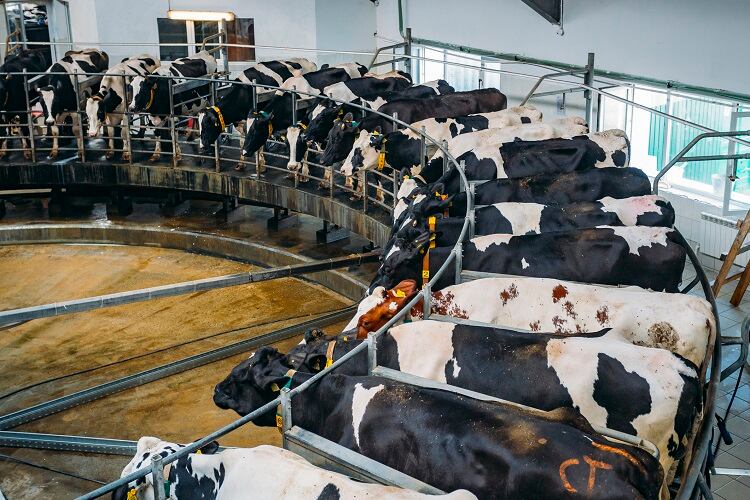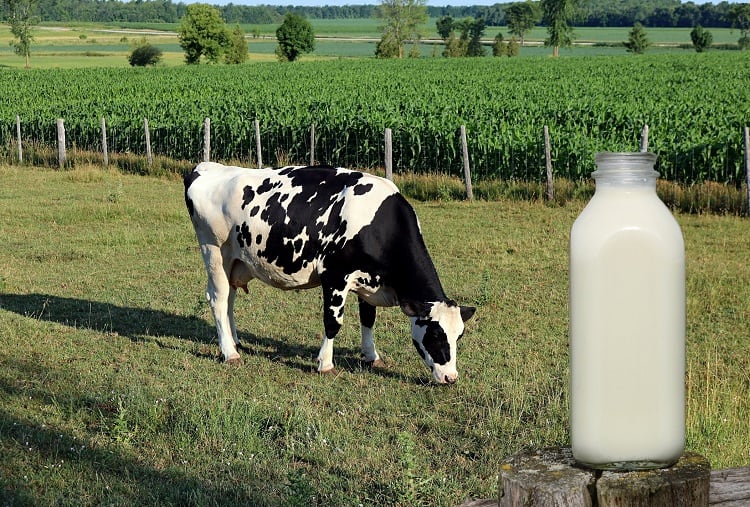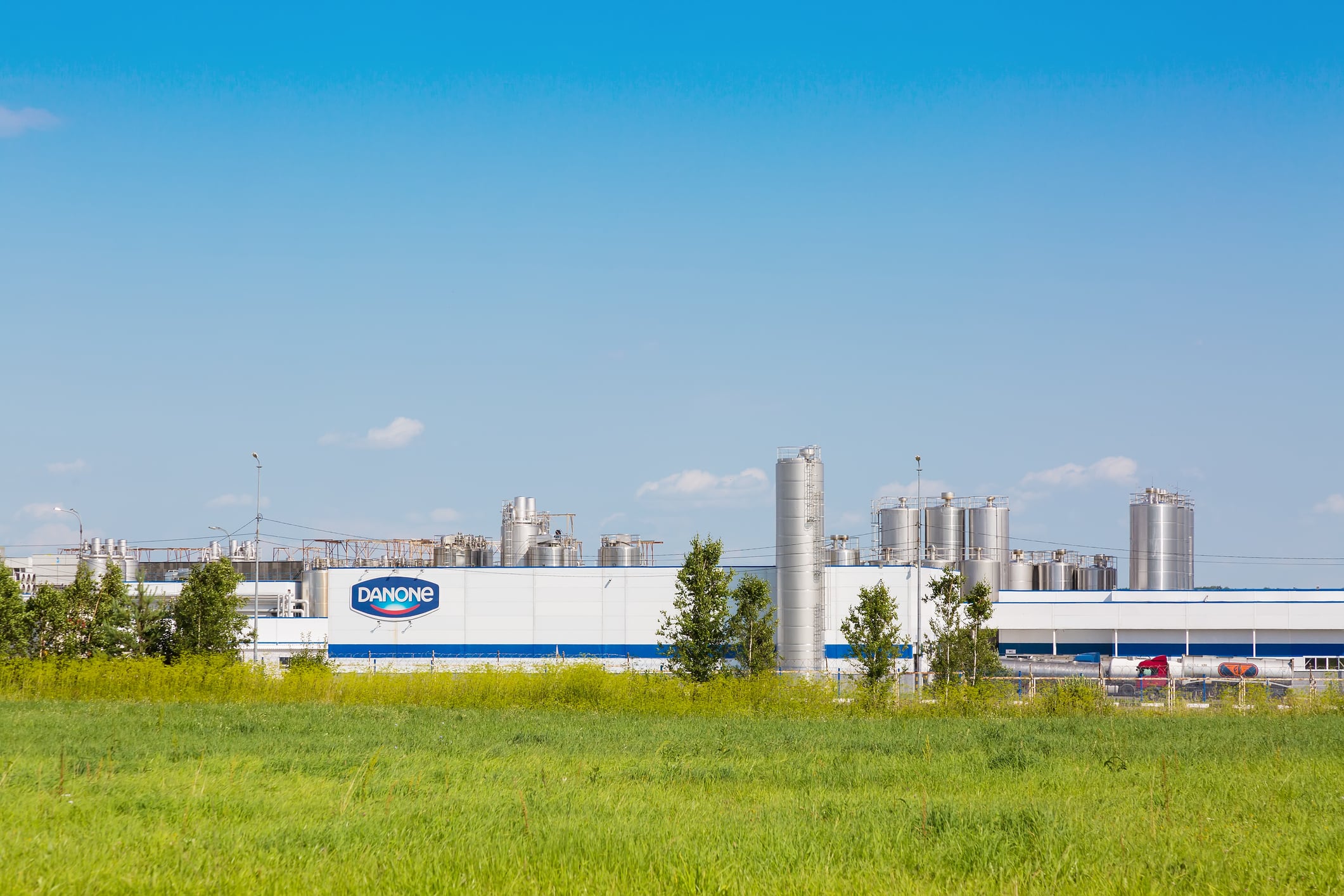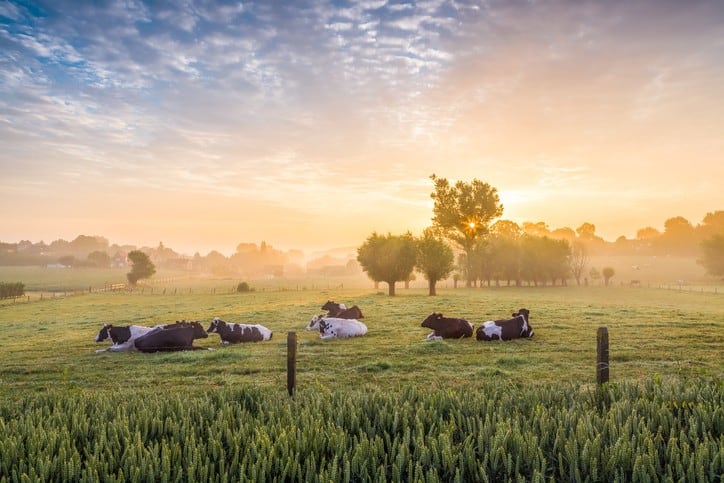A fresh study has found that 13 of the world’s largest dairy corporations combined – including Group Lactalis and Danone – emitted more greenhouse gases (GHGs) than BHP and ConocoPhillips in 2017.
‘Carbon majors’ BHP, an Australia-based mining, oil, and gas operation, and US-based oil company ConocoPhillips are regarded as two of the world’s biggest fossil fuel emitters.
The study, published yesterday (15 June 2020) by the Institute for Agriculture & Trade Policy (IATP), also noted that emissions from large-scale dairy operations are on the rise.
Between 2015 and 2017 total combined emissions of these top 13 rose by 11%, noted study author and IATP Europe director Shefali Sharma.
“Even as governments signed the Paris Agreement in 2015 to significantly rein in global emissions, these companies’ increase of 32.3 million tonnes (MtCO2eq) of GHGs equates to the pollution stemming from 6.9 million passenger cars driven in one year (13.6 billion litres or 3.6 billion gallons of gasoline).
“Some dairy companies increased their emissions by as much as 30% in the two-year period.”
Emissions increase in Europe
Of the 13 milk majors cited, five are headquartered in Europe. These include Group Lactalis, Danone, FrieslandCampina, Arla Foods, and Nestlé. Only the latter two – Arla and Nestlé – reduced GHGs over the two-year period.
The biggest EU-based emitter, which is also the third largest producer worldwide, was Group Lactalis. The 30% increase in emissions came as the business boosted international expansion into into India, Turkey, Brazil, Mexico, Uruguay, Argentina, Hungry, and Romania, noted the study.
The study found the biggest increase in emissions came from India’s largest dairy cooperative, Amul.
In Europe, Group Lactalis was revealed to have the biggest jump in emissions during the same two-year period, when the company was expanding into various countries, including India.
According to the European Dairy Association, there may be a link between geography and greenhouse gas emissions (GHG).
“Whenever you engage in a country like India, the Philippines, or Pakistan to name a few examples, you are very often facing an extremely low milk yield per cow, the most significant source of GHG within the dairy sector,” a spokesperson told FoodNavigator.
“It seems logical to me that in that context at a first time your overall GHG emission figures may go up.”
Another EU-based dairy giant, Danone, increased its production and emissions by 15%.
The dairy firm with the biggest jump in GHG emissions is headquartered outside of the European Union. Amul, India’s largest dairy cooperative, increased its production by 43% during this time, primarily for domestic consumption, according to IATP’s findings.
A push for government action
Making the link between emissions from the ‘top 13’ and two of the world’s biggest fossil fuel emitters in BHP and ConocoPhillips suggests a stark comparison in public pressure.
“Unlike growing public scrutiny on fossil fuel companies, little public pressure exists to hold global meat and dairy corporations accountable for their emissions, even as scientific evidence mounts that our food system is responsible for up to 37% of all global emissions,” noted Sharma in the report.
While certain businesses have specific emission-tracking and/or reduction policies in place, none are legally bound to publish or verify their climate emissions or present plans to limit global warming to 1.5˚C.
Danone, Arla, Fonterra, and Nestlé, for example, have pledged to reduce their absolute emissions. And Danone and Arla are tracking their supply chain emissions through ‘emissions intensity’ reduction targets.
IATP is urging regulators to take action. “Governments need to begin by integrating climate goals within their national-level farm policies,” noted Sharma in the report. “These climate goals should address strategies to build climate resilience and reduce emissions.”
For a ‘real climate revolution’ in the agriculture sector, IATP believes governments must ‘transform’ farm and climate policy ‘in a way that shifts power away from these corporate drivers’.
“They must be courageous enough to enact policy change towards agroecological systems that empower rural producers to do the right thing for their families, communities and the planet.”

‘Food awareness’ charity ProVeg International is in agreement. Not only is the dairy industry ‘highly destructive’, but there is currently ‘very little scrutiny’ to hold global dairy companies to account for their emissions, said ProVeg International VP Jasmijn de Boo.
“If governments want to make real progress on their climate goals, they must take swift action to curb the emissions from dairy as well as meat.
“At an EU level, we believe this would be best achieved through the CAP negotiations to overhaul the subsidy system that continues to perpetuate an environmentally destructive model of agriculture.”
Dairy association slams report for ‘turning the reality upside down’
The study, however, has not been well received by all. Lobby group the European Dairy Association (EDA), for example, suggested it resents implications its members are not taking responsibility for their environmental impacts.
“The study seems to claim that major dairy companies across the globe and hence the dairy sector as a whole is not taking up its responsibility. This is turning the reality up-side down,” an EDA spokesperson told FoodNavigator.
“It completely ignores that six of these 13 dairies are headquartered in Europe and fully subscribe to the EU Green Deal with our shared ambition to make Europe the first climate neutral continent by 2050.”
Indeed, the European Green Deal does include initiatives for GHG monitoring, the spokesperson continued: “There is no need for a legal requirement, since reaching the 2050 goals is not a question of legal compliance, but of our global responsibility and a pre-requisite for our future as a dairy sector.”
Further, the trade association takes issue with the report’s overview on the commitments of these players, which it described as ‘far from exhaustive’.
Overall, the EDA finds the report an affront to ‘rational thinking’. “To compare the 13 major dairies supplying safe, nutritious and affordable food all over the globe and assuring a livelihood for dozens of millions in the dairy community is an insult to all dairy people and to any rational thinking.
“But it seems to work well when it comes to catching media attention.”





